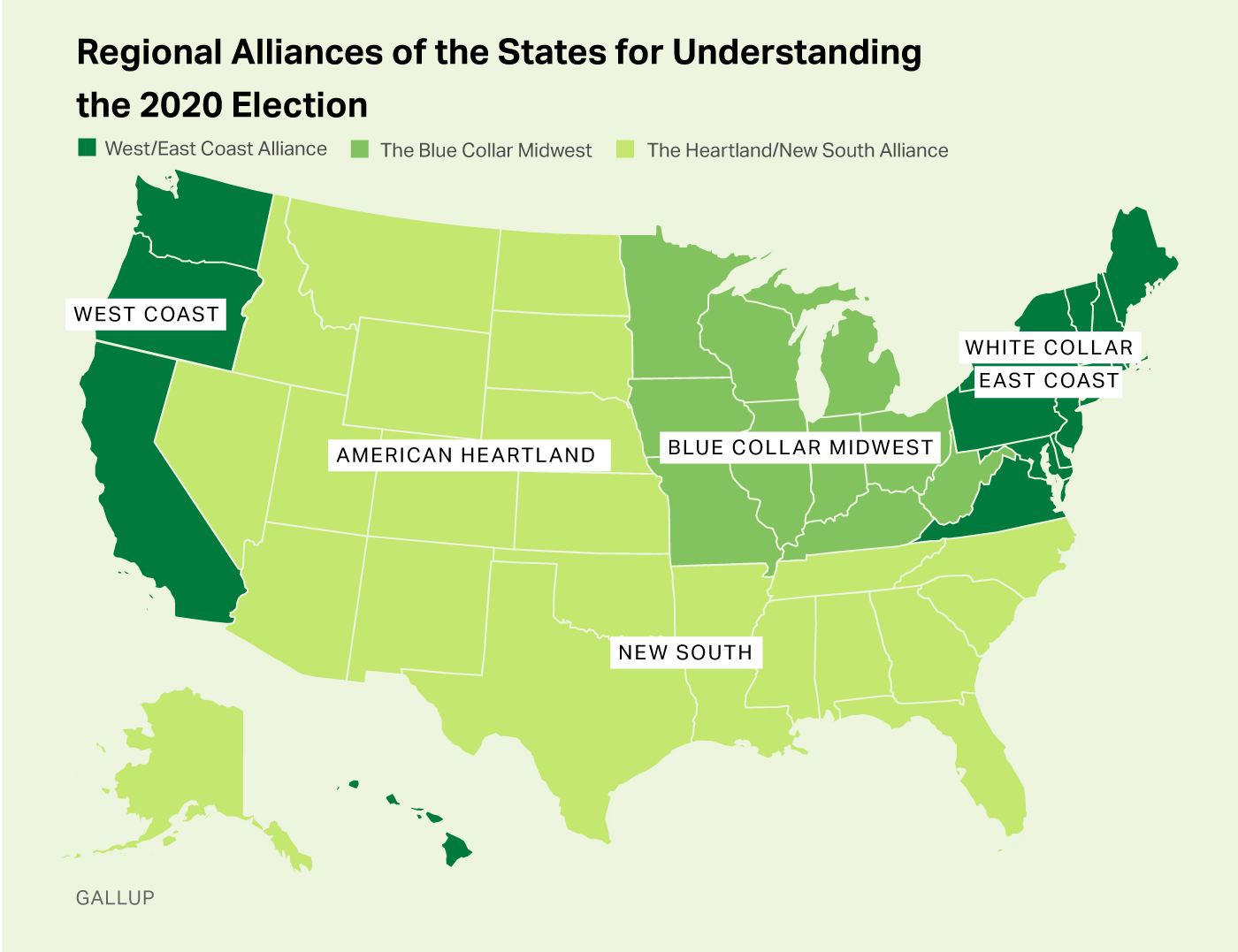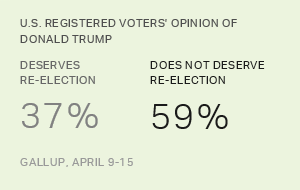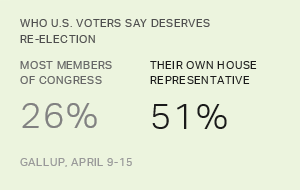In January, I asked whether President Donald Trump can "defy the odds once again," this time overcoming the historical pattern of heavy midterm losses for unpopular presidents. At the time, Trump was below 40% job approval and Republicans were trailing on the generic ballot by about eight points, on average.
After some improvement over the summer, both indicators are back to baseline. Trump's job approval has been wavering at or below 40%, and polls summarized on Real Clear ���۴�ý indicate the GOP is averaging an eight-point deficit on the generic ballot among registered voters. These factors tend to indicate a significant seat loss for Republicans in the upcoming midterm elections, with recent ���۴�ýanalysis noting the president's party loses an average 37 House seats when his job approval is below 50%.
Voters have many issues to consider in 2018, including the president's personality and style, immigration reform, race relations, healthcare, and their dissatisfaction with government leadership overall, to name a few.
An additional factor that has to be weighed in any midterm calculus is the economy. The economic condition of the country is usually at or near the top of the list of deciding factors in all elections, and was certainly important in the party reversals that occurred in the 1994 and 2010 midterms.
Comparing today's economic environment to that of the most recent of these transformative elections -- Barack Obama's first midterm in 2010 -- reveals dramatically different situations. Gallup's latest economic confidence measure, from early September, finds 51% of Americans rating the economy as "excellent" or "good." By contrast, just 12% rated the economy positively in October 2010, shortly before Obama's party lost 63 House seats. Also, almost two-thirds of Americans today consider it a good time to find a quality job -- while ahead of Obama's first midterm, nearly nine in 10 thought it was a bad time to find a quality job.
| October 2010 | September 2018 | Change | ||||||||||||||||||||||||||||||||||||||||||||||||||||||||||||||||||||||||||||||||||||||||||||||||||
|---|---|---|---|---|---|---|---|---|---|---|---|---|---|---|---|---|---|---|---|---|---|---|---|---|---|---|---|---|---|---|---|---|---|---|---|---|---|---|---|---|---|---|---|---|---|---|---|---|---|---|---|---|---|---|---|---|---|---|---|---|---|---|---|---|---|---|---|---|---|---|---|---|---|---|---|---|---|---|---|---|---|---|---|---|---|---|---|---|---|---|---|---|---|---|---|---|---|---|---|---|
| % | % | pct. pts. | ||||||||||||||||||||||||||||||||||||||||||||||||||||||||||||||||||||||||||||||||||||||||||||||||||
| Rating current economic conditions | ||||||||||||||||||||||||||||||||||||||||||||||||||||||||||||||||||||||||||||||||||||||||||||||||||||
| Excellent/Good | 12 | 51 | +39 | |||||||||||||||||||||||||||||||||||||||||||||||||||||||||||||||||||||||||||||||||||||||||||||||||
| Only fair | 43 | 35 | -8 | |||||||||||||||||||||||||||||||||||||||||||||||||||||||||||||||||||||||||||||||||||||||||||||||||
| Poor | 44 | 13 | -31 | |||||||||||||||||||||||||||||||||||||||||||||||||||||||||||||||||||||||||||||||||||||||||||||||||
| Good or bad time to find a quality job | ||||||||||||||||||||||||||||||||||||||||||||||||||||||||||||||||||||||||||||||||||||||||||||||||||||
| Good time | 9 | 64 | +55 | |||||||||||||||||||||||||||||||||||||||||||||||||||||||||||||||||||||||||||||||||||||||||||||||||
| Bad time | 88 | 32 | -56 | |||||||||||||||||||||||||||||||||||||||||||||||||||||||||||||||||||||||||||||||||||||||||||||||||
| Economic conditions: Oct. 25-31, 2010; Sept. 4-12, 2018; Quality job: Oct. 7-10, 2010, Sept. 4-12, 2018 | ||||||||||||||||||||||||||||||||||||||||||||||||||||||||||||||||||||||||||||||||||||||||||||||||||||
| Gallup | ||||||||||||||||||||||||||||||||||||||||||||||||||||||||||||||||||||||||||||||||||||||||||||||||||||
The State of House Races Across the U.S.
Despite the sitting president's impact on midterm elections, and despite the influence of the state of the national economy, majority control of the U.S. House of Representatives ultimately depends on voters in 435 individual districts. Thus, it is useful to move beyond the national environment and to drill deeper into the regions of the U.S. states to observe where most of the competitive and heavily contested U.S. House elections are located.
Estimates can vary, but The Cook Political Report's latest district-level analysis of midterms (as of Sept. 19) shows that there are about 30 U.S. House seats that are truly "toss-ups" for 2018. These are the House seats to watch, as they could go either to the Republican or Democrat candidate by very few votes.
A second important competitive category involves districts that "lean Republican" or "lean Democrat." The Cook Political Report currently identifies 37 districts where one party's candidate has an advantage over the other, though not enough to secure the seat for that party. These are the ones that could likely be swept up into a so-called "wave election," similar to the 1994 and 2010 midterms.
Republicans have a 22-seat majority as we head into the midterm elections. Thus, to take control of the House, Democrats only have to win about 40% to 45% of the 67 seats that are either highly or somewhat competitive.
The Midterms by America's 'Super Regions'
U.S. elections today can arguably best be understood in terms of five geographic regions that can be collapsed into three geopolitical "super regions," as follows:
- The West/East Coast Alliance, where Trump lost 15 of 16 states, plus D.C., in 2016
- The New South/Heartland Alliance, where Trump won 21 of 24 states in 2016
- The Blue Collar Midwest, where Trump won eight of 10 states in 2016 but Obama won the majority in 2012

Overlaying the Cook midterm seat analysis with these regions, we see that 27 of the most competitive districts (either toss-ups or districts that lean toward one party or the other) are in the West/East Coast Alliance, 23 are in the New South/Heartland Alliance, and 18 are in the Blue Collar Midwest.
| West/East Coast | New South/Heartland | Blue Collar Midwest | |||||||||||||||||||||||||||||||||||||||||||||||||||||||||||||||||||||||||||||||||||||||||||||||||
|---|---|---|---|---|---|---|---|---|---|---|---|---|---|---|---|---|---|---|---|---|---|---|---|---|---|---|---|---|---|---|---|---|---|---|---|---|---|---|---|---|---|---|---|---|---|---|---|---|---|---|---|---|---|---|---|---|---|---|---|---|---|---|---|---|---|---|---|---|---|---|---|---|---|---|---|---|---|---|---|---|---|---|---|---|---|---|---|---|---|---|---|---|---|---|---|---|---|---|---|
| Toss-up seats | 13 | 6 | 11 | ||||||||||||||||||||||||||||||||||||||||||||||||||||||||||||||||||||||||||||||||||||||||||||||||
| Lean Republican/Lean Democratic | 14 | 17 | 7 | ||||||||||||||||||||||||||||||||||||||||||||||||||||||||||||||||||||||||||||||||||||||||||||||||
| Total competitive | 27 | 23 | 18 | ||||||||||||||||||||||||||||||||||||||||||||||||||||||||||||||||||||||||||||||||||||||||||||||||
| Designation of competitive seats based on The Cook Political Report U.S. House Race Ratings, Sept. 19, 2018 | |||||||||||||||||||||||||||||||||||||||||||||||||||||||||||||||||||||||||||||||||||||||||||||||||||
| Gallup | |||||||||||||||||||||||||||||||||||||||||||||||||||||||||||||||||||||||||||||||||||||||||||||||||||
Reviewing economic attitudes in each super region reveals that the West/East Coast Alliance provides a less favorable economic atmosphere for Republican candidates than either the New South/Heartland Alliance or the Blue Collar Midwest. As shown below, the majority of residents in the West/East Coast region disapprove of Trump's handling of the economy, while majorities of those in the New South/Heartland -- and, more importantly, in the "swing region" of the 10 states in the Blue Collar Midwest -- approve.
Still, majorities in all three regions are positive about the labor market, saying it is a good time to find a quality job. It will therefore be instructive to see if Republican candidates outperform the polls in all three regions, possibly because of the broadly positive economic views. Alternatively, the GOP may perform better in the competitive districts situated in the two geopolitical regions that think more highly of Trump's performance on the economy. Or, there could be no difference in the outcome of the competitive districts by region, reflecting that a competitive district is just as competitive in one area as another.
| West/East Coast | New South/Heartland | Blue Collar Midwest | ||||||||||||||||||||||||||||||||||||||||||||||||||||||||||||||||||||||||||||||||||||||||||||||||||
|---|---|---|---|---|---|---|---|---|---|---|---|---|---|---|---|---|---|---|---|---|---|---|---|---|---|---|---|---|---|---|---|---|---|---|---|---|---|---|---|---|---|---|---|---|---|---|---|---|---|---|---|---|---|---|---|---|---|---|---|---|---|---|---|---|---|---|---|---|---|---|---|---|---|---|---|---|---|---|---|---|---|---|---|---|---|---|---|---|---|---|---|---|---|---|---|---|---|---|---|---|
| % | % | % | ||||||||||||||||||||||||||||||||||||||||||||||||||||||||||||||||||||||||||||||||||||||||||||||||||
| Trump job rating on the economy | ||||||||||||||||||||||||||||||||||||||||||||||||||||||||||||||||||||||||||||||||||||||||||||||||||||
| Approve | 43 | 55 | 54 | |||||||||||||||||||||||||||||||||||||||||||||||||||||||||||||||||||||||||||||||||||||||||||||||||
| Disapprove | 55 | 43 | 42 | |||||||||||||||||||||||||||||||||||||||||||||||||||||||||||||||||||||||||||||||||||||||||||||||||
| Good/Bad time to find quality job | ||||||||||||||||||||||||||||||||||||||||||||||||||||||||||||||||||||||||||||||||||||||||||||||||||||
| Good time | 61 | 65 | 69 | |||||||||||||||||||||||||||||||||||||||||||||||||||||||||||||||||||||||||||||||||||||||||||||||||
| Bad time | 34 | 33 | 27 | |||||||||||||||||||||||||||||||||||||||||||||||||||||||||||||||||||||||||||||||||||||||||||||||||
| Gallup | ||||||||||||||||||||||||||||||||||||||||||||||||||||||||||||||||||||||||||||||||||||||||||||||||||||
The Possible Impact of Trade Policies
Although the broad, national economic context for 2018 looks favorable for the incumbent party of President Trump, there was a point earlier this year when it seemed the impact of Trump's trade policies might offset Americans' otherwise positive sentiment toward the economy.
However, according to two ���۴�ýmeasures, public concerns over the economic impact of tariffs and trade wars have not materialized yet. For example, only 23% of U.S. adults in July said they were following news about the U.S.-China tariff conflict "very closely." Most Americans say the tariffs are having no effect on their own financial situation, and most workers see no impact on their employer.
Bottom Line
With Trump's job approval rating holding well below the 50% mark, the Republican majority is facing such a strong combination of political, personal and historical headwinds that many political observers think a "blue wave" will sweep Democrats into power in the U.S. Congress for 2019-2020. Trump is not on any ballot, but the midterm elections may well be an indirect referendum on his executive performance and a potential check on the direction he is taking the nation.
At the same time, Trump's party has the substantial benefit of a roaring economy. The Trump administration has made economics its early hallmark, with high levels of job creation and greater economic confidence. With only a little more than one month to go before the midterms on Nov. 6, the positive economic ratings could somewhat moderate a "wave election" for the opposition party, but only if the voting electorate credits Trump's first-term policies.
We will know more about the direction of the midterms in the first week of October, when the generic ballot, statistical models and predictions will carry more weight -- but the key economic and political factors seem to be settling into place, and this election may reveal which is more predictive of midterm election outcomes, presidential approval or economic sentiment. Whether regional economic sentiment, particularly in the Blue Collar Midwest, will be enough of a counterweight to the historical midterm trends against an unpopular president is the political question of the year.




